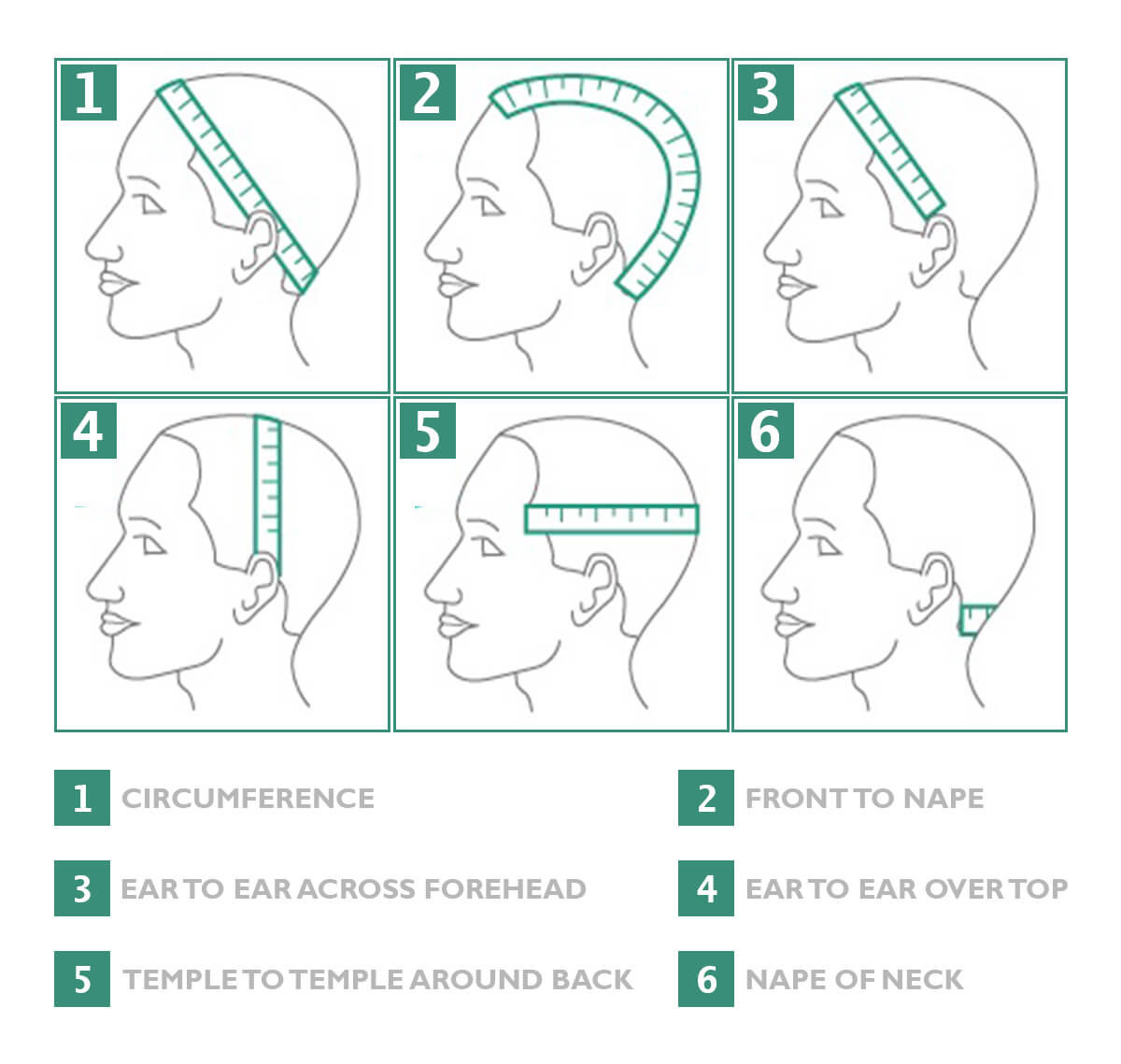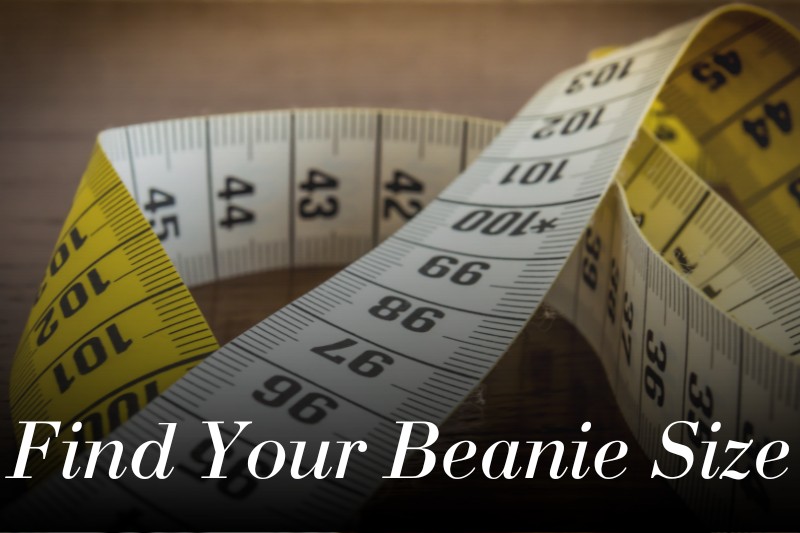Getting that perfect-fitting beanie is a wonderful thing. But, it’s also super personal, and even though many beanies online say “one size fits all,” this isn’t always the case. Getting some basic hat measurements and using a beanie size chart can make the difference between an OK fit and that comfy hat you never want to take off.
How to find your beanie hat size
Figuring out how to find your beanie size isn’t actually that difficult. Using these simple steps and the beanie size chart below, digital purchasing pitfalls can be avoided, and easier access to the perfect beanie fit is almost guaranteed. Almost. Because, come on, heads are quite different.
1) Measure your head
The first step is pretty obvious. Measure your head. But, what measurements are actually useful? Since we’re talking about crocheted or knitted beanies and not a hard-form hat, we only really need a couple of measurements.
- You need to know the circumference of your head, or the distance around measured just above your ears. (Number 1 in the image below)
- And, you need to know the measurement from the top of your ear, over your head, to the top of your opposite ear. (Number 4 in the image below)
Noting the measurement both in inches (to the nearest eighth of an inch) and centimeters will make it a lot easier for you when you’re shopping. Some manufacturers state size in inches, while others give centimeters.
The circumference of your head will generally tell you what your overall beanie size will be. For instance, are you a small, medium, or large? Also, sometimes it will actually say the circumference of the beanie in the description of the product.
The measurement over the top of your head from ear to ear will help you find the right length of beanie for you. Once you have this measurement, you can divide it by two, and this should be the length you’re looking for. You can also add or subtract a bit based on whether you like really short fisherman style beanies or long, slouchy ones.

2) Beanie size chart
Different countries have their own sizing standards. When you throw in the imperial vs metric differences, finding the proper beanie dimensions can pose a challenge.
Products will generally have a sizing chart that reflects both sizes (small, medium, and large), as well as specific measurements in inches and centimeters.
Using the circumference determined in step one, the following size chart can help you find a quality fit. However, remember that this is just a guide, and some beanie makers might use slightly different info for their sizes.
| SIZE | INCHES | US | UK | EU (CM) |
|---|---|---|---|---|
| Small | 20 ⅞ | 6 ⅝ | 6 ½ | 53 |
| 21 ¼ | 6 ¾ | 6 ⅝ | 54 | |
| 21 ⅝ | 6 ⅞ | 6 ¾ | 55 | |
| Medium | 22 | 7 | 6 ⅞ | 56 |
| 22 ½ | 7 ⅛ | 7 | 57 | |
| 22 ⅞ | 7 ¼ | 7 ⅛ | 58 | |
| Large | 23 ¼ | 7 ⅜ | 7 ¼ | 59 |
| 23 ⅝ | 7 ½ | 7 ⅜ | 60 | |
| X-Large | 24 | 7 ⅝ | 7 ½ | 61 |
| 24 ½ | 7 ¾ | 7 ⅝ | 62 | |
| XX-Large | 24 ⅞ | 7 ⅞ | 7 ¾ | 63 |
| 25 ¼ | 8 | 7 ⅞ | 64 | |
| 25 ⅝ | 8 ⅛ | 8 | 65 |
3) Look at customer reviews
People can be brutally honest in online reviews. Take this for a grain of salt, but consulting them can often be helpful in terms of actual sizing and fit.
Generally, if the size is way off from what is advertised, consumers will have a field day letting the world know. But, if the sizing seems pretty accurate, that too is often reflected in the reviews and comments.
A good solution is finding products and sellers with positive reviews and very little mention of sizing concerns. This, coupled with the above two steps, is a useful method of preventing buyer’s remorse.
4) Stretchy vs oversized beanies
Finally, remember your own personal tastes. What are your likes and dislikes when it comes to a great-fitting beanie?
While, for some, a much-loved method of purchasing clothes is to default to one size larger than is needed, this might not work well for beanie shopping. If a beanie is too loose, you may miss out a bit on its ability to keep your head warm. A snug beanie will typically help keep heat in better than a loose-fitting one.
However, oversized beanies can look amazing! So, if that’s your primary concern when shopping, go for it.
And, while a snug beanie might keep you a little warmer, if it’s too tight, you may have other issues. For instance, excessive stretching can cause unnecessary wear and tear on your new, beloved knitted hat.
Also, after long periods of wear, a very tight-fitting knit or crocheted beanie can become really uncomfortable.
5) Proper maintenance of your beanie
Most, if not all, beanie lovers have had the unpleasant experience of shrinking a much-loved item in the wash. More often than not, beanies will have instructions for proper maintenance. But, how to wash a beanie isn’t always straightforward. So, we wrote a piece on that!
Usually, the instructions will help to prevent unfortunate shrinkage. Should your new beanie not have this info attached, a good rule of thumb is to handwash and dry natural fabrics, whereas synthetic fibers tend to be more resilient to normal washing and drying. Any knit material is subject to dryer-induced shrinkage, with the looser woven fabrics being the most vulnerable.
Check out that guide linked above.
Beanie size chart and guide: Final thoughts
Using these straightforward tools and methods, the journey to finding the ideal beanie hat is made simple and enjoyable.
The beanie size chart can help you make the right decision about fit, but the style, the flair, and the rest is always up to you.
Have fun!

